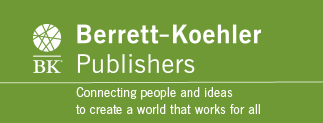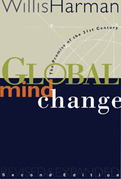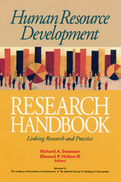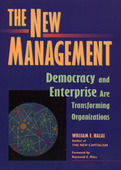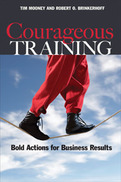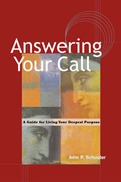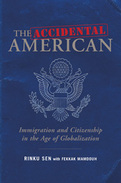1998
Revolutions are generally thought of as large-scale, bloody upheavals involving whoe countries and societies. But there are quieter revolutions that begin in the individual mind and create the kind of change that may be even more significant. By deliberately changing their internal image of reality, people are transforming the world. Right now we are living through one of the most fundamental shifts in histroy-a change in the actual belief structure of Western industrial society.
Global Mind Change, first published in 1988 and revised and expanded by the author just before his death in 1997, connects every major field of human endeavor in its exploration of the possibilities for social transformation through internal change. Harman, whose career spanned both the technical (electircal engineering) and psychological sciences, examines the role of consciousness in five areas:
o Mature science, which validates subjective, religious, and spiritual insights along with objective data as a way of describing reality
o Spirituality and consciousness research, which shows the compatibility between the world's religions and the insights of thousands of years of exploration of consciousness
o Health and healing, where the mind's role is increasingly recognized as a crucial influence on human wellness
o Psychology and psychotherapy, where research into unexplained phenomena and exceptional mental and physical abilities proves the only human limits are those we believe in
o Economics and management, where managers are utilizing brain-mind research to release employees' creativity, and corporations are addressing global issues of poverty, security, and the environment
Revolutions are generally thought of as large-scale, bloody upheavals involving whoe countries and societies. But there are quieter revolutions that begin in the individual mind and create the kind of change that may be even more significant. By deliberately changing their internal image of reality, people are transforming the world. Right now we are living through one of the most fundamental shifts in histroy-a change in the actual belief structure of Western industrial society.
Global Mind Change, first published in 1988 and revised and expanded by the author just before his death in 1997, connects every major field of human endeavor in its exploration of the possibilities for social transformation through internal change. Harman, whose career spanned both the technical (electircal engineering) and psychological sciences, examines the role of consciousness in five areas:
o Mature science, which validates subjective, religious, and spiritual insights along with objective data as a way of describing reality
o Spirituality and consciousness research, which shows the compatibility between the world's religions and the insights of thousands of years of exploration of consciousness
o Health and healing, where the mind's role is increasingly recognized as a crucial influence on human wellness
o Psychology and psychotherapy, where research into unexplained phenomena and exceptional mental and physical abilities proves the only human limits are those we believe in
o Economics and management, where managers are utilizing brain-mind research to release employees' creativity, and corporations are addressing global issues of poverty, security, and the environment
How is it that some Human Resource Development (HRD) professionals consistently get the results that their organizations need, while others regularly get lost in the process? The Human Resource Development Research Handbook argues that expert HRD professionals think like researchers. You don't need to be a researcher to obtain consistently high-quality HRD results, but thinking like a researcher gives you the discipline required to be an expert. Thus, the much-hyped gap between theory and practice is the arena of opportunity and excellence. The Human Resource Development Research Handbook gives practitioners the tools they need to stay on the leading edge of the profession. It addresses three core areas: The practical importance of research; ways of doing practical research; and getting started on research. Written for practitioners and scholars, this is the first book to explain the value, purposes, methods, and processes of HRD research in clear, simple language.
The Human Resource Development Research Handbook demystifies the research process so HRD practitioners can transform their practice to incorporate leading-edge research. Each chapter is written in straightforward language by a leading researcher. Real-world examples clearly show how research and theory are not just for academics, but are practical tools to solve everyday problems.
- Written by top researchers in the field of Human Resource Development
- Uses real-world examples to make the research understandable
- Helps practitioners solve complex practical problems that need the application of existing or new research
- Sponsored by the Academy of Human Resource Development and the American Society for Training and Development
1998
o "Serving enterprises" make customers working partners in the creation of value
o "Knowledge entrepreneurs" form teams of self-managed internal enterprises
o "Internal markets" and "Corporate community" harness external forces to drive continuous change
o The power of "inner leadership" unites liberated workers, critical clients, and temporary business partners
o "Intelligent growth" offers strategic advantage that is ecologically benign
Illustrative examples, survey data, trends, anecdotes, and exercises offer original insights into the use of New Management principles. In addition, mini-case studies of MCI, Saturn, The Body Shop, Hewlett-Packard, Johnson & Johnson, Southwest Airlines, Home Depot, IKEA, Wal-Mart and other great companies illustrate vividly how creative managers design and lead organizations in an era of global competition, constant change, and empowered people. The author also analyzes critical issues, such as the nagging old conflict between profit and society, to provide managers a comprehensive, stimulating guide to where their craft is heading.
Halal argues that the transition to a New Management is almost inevitable because it is being driven not by altruism or even good leadership, but by the relentless advance of the Information Revolution. Only small entrepreneurial teams operating from the bottom-up can master today's exploding complexity, and gaining stakeholder support is now essential because a knowledge-based economy has made cooperation a competitive advantage. Rather than fussing over quick fixes, The New Management points the way toward more fundamental solutions to the massive changes that will confront all institutions as the transition to a knowledge society rolls on into the 21st century.
2008
· Shows how training can be made far more effective if trainers adopt a more courageous mindset
· Offers tools and techniques to execute this new mindset
· Includes four in-depth case studies showing the results achieved through Courageous Training techniques
Dozens of books have been written about how to do training more effectively, with more impact, and so on. Yet despite all that well-meaning advice, of the $70 billion spent on training in the U. S., only 12-15 percent actually gets applied in ways that contribute tangible value to organizations.
But Tim Mooney and Robert Brinkerhoff have discovered that some iconoclastic trainers achieve breakthrough results by having the courage to break away from the usual approaches and identify what is really needed and what really works. Studying why these bold training leaders were so successful implementing Brinkerhoff and Mooney’s High Impact Learning tools and methods led them to distill the principles and practices outlined in Courageous Training.
Mooney and Brinkerhoff lay out the Four Pillars of Courageous Training, illustrating each with real-life examples that highlight specific concepts, methods, and tools. Going deeper, they delve into the mindset needed to truly transform training, which they summarize in the Courageous Training Code. And they present four in-depth case studies, written by training leaders in major organizations, showing the audacious actions these leaders took to produce dramatic—and measurable—business results.
2003
• Describes what it means to be called -- to live a life that fully uses our talents and adds the most lasting value to the world
• Explains how to hear your call, muster the courage to respond to it, and stay on track to make your vision a reality, even when faced with saboteurs who try to squelch your dreams of living a "called" life
• Includes principles and guidelines for creating a life of significance, illustrated with concrete and practical real-world examples
